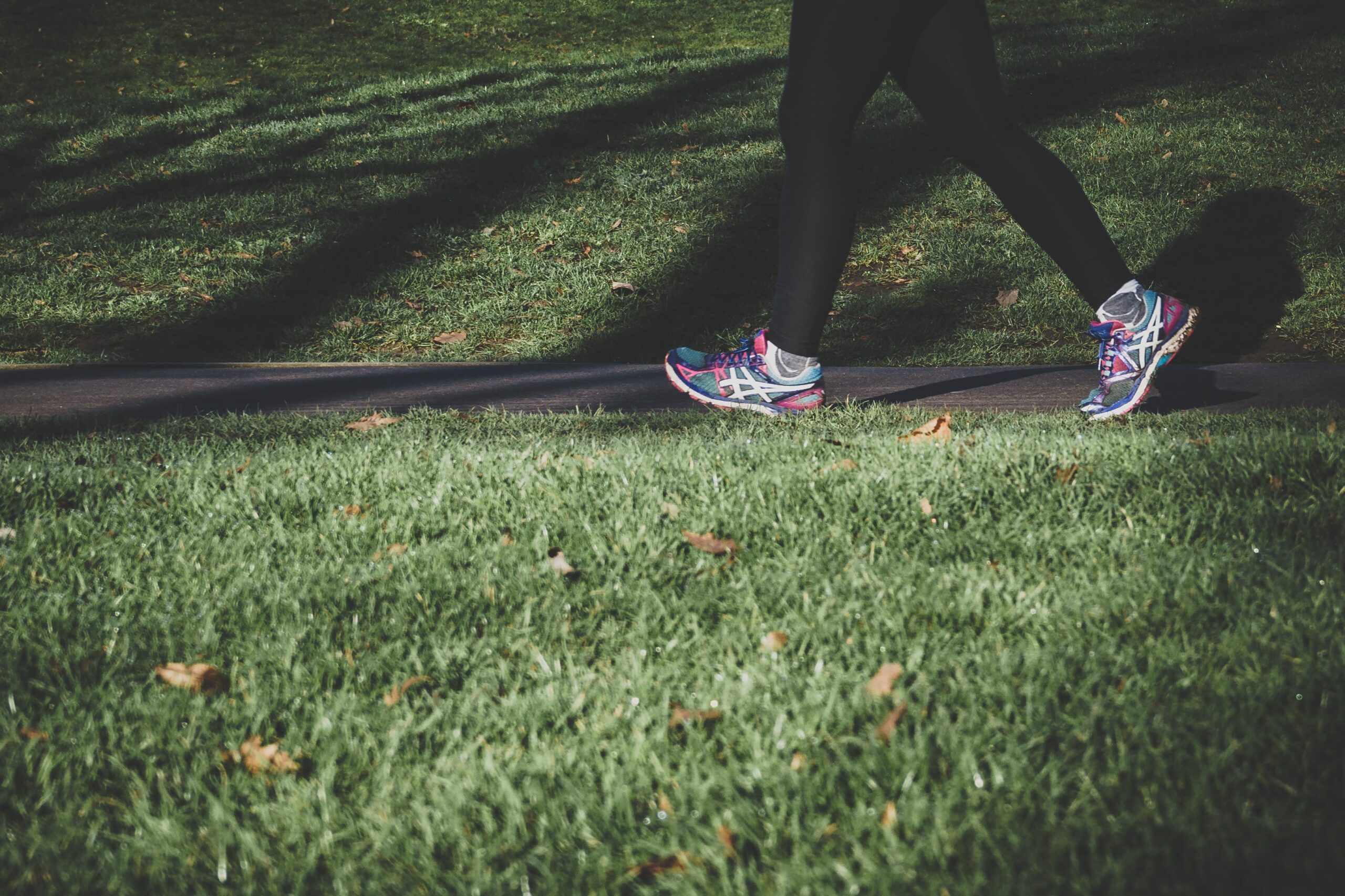[box]
Being diagnosed with degenerated disc disease doesn’t mean it’s the end of your running journey. Instead, consider it just the beginning! Because now is the best time to become a smart runner, change your running pattern, understand your body, and maintain a healthy lifestyle to enjoy your run.
Before that, you must know that DDD is not a disease but a natural aging process that affects your mobility. Our spine holds almost all of the body’s weight and bears the repetitive impact of our daily activities like running, jogging, and exercising.
However, when it tends to weaken, you need to get proper counseling on modifying your basic activities to reduce the degeneration process.
Rest assured! In this article, we’ll guide you on the dos and don’ts of running with DDD and also help you to maintain your running schedules. Let’s dive further into the article and understand how we can revise our running pattern with DDD.

[/box]
Should You Give Up Running If You Have DDD?
[box]
No! Do not give up running entirely. Instead, change your long-running schedules to moderate ones. If you’re an avid runner suffering from degenerative disease, you’ll feel demotivated and unnerved for not running daily.
Hence, make a running pattern, talk to your doctor, and substitute running with other exercises on some days. Chin up! Because now you’ve transformed from an avid runner to a smart runner.
Nonetheless, If you’re recently diagnosed with DDD and your back pain flares up even after moderate activities, experts advise you to halt your running routine. The best solution is to switch to a low-impact exercise until your back pain lessens. Some other safer workout alternatives to running are swimming, yoga and exercise walking.
Avoid any strenuous activity that contributes to rising pressure on your lower back. Such exercises include squats, presses, difficult yoga positions, or toe-touching.
Remember, talking to your therapist and changing your lifestyle and running routine is critical.
[/box]
5 Expert Tips For Running With Degenerative Disc Disease
[box]
When you have DDD, your spine’s shock-absorbing capacity minimizes, and this can cause trouble. Any high strenuous activity will negatively impact your spine if you do not change your running routine. Here are five easy ways to modify your running pattern and help you run safely.
[/box]
1. Practice Proper Running Form On Even Surfaces
[box]

Running on uneven or rocky surfaces with degenerative disc disease will worsen your back pain. If you have not changed your running technique and surfaces, high-impact forces repeatedly transfer from your lower back to your knees, hips, and back. This repeated force will damage your spine, augmenting the wear and tear.
To prevent worsening your DDD, you need to adapt to proper running form. Firstly, if you’ve moderate to severe back pain, refrain from running on rocky hills or uneven surfaces.
Secondly, modify your running technique such that less stress is transferred to your spine.
Avoid these when running with Degenerative Disc Disease:
- Keep your head up, back straight, and shoulders relaxed while running.
- Do not hunch your shoulders over.
- Avoid striking down on heels, as it transfers high forces to the knees and back.
- Do not bounce during your running. The higher you lift off the ground, the greater the shock transfer when landing.
Any moderate to severe stress to your spine can damage the disc, negatively affecting your healing. Therefore, most doctors suggest runners return to natural running techniques under the supervision of their trainers.
[/box]
2. Find Some Alternative Activities To Running
[box]

According to SPINE-health, you cannot reverse your degenerated disc process. Instead, you can take some steps to improve your health and lifestyle. Experts advise maintaining physical strength, flexibility, and back pain flairs through mild to moderate activities.
Find some alternatives to running and modify your running routine. For instance, you can go for low-impact workouts like back pain exercises, water aerobics, yoga, and back pain stretches to keep your muscles and bones in shape. Also, work with your physical therapist or chiropractor to strengthen your spine’s conditioning system through core strengthening exercises.
One study concludes that core muscle strengthening exercises help reduce lower back pain and nourish your bones. Therefore, talk to your therapist and go for lower back pain exercises to fasten your recovery.
When your pain subsides to a tolerable level, make a running schedule and start running for shorter distances, taking breaks in between. Don’t push yourself too hard and exceed the limits.
[/box]
3. Cool Down Jog After Every Run
[box]

Cooling down your body after every run gives your body space to recover and clears the lactate levels. These short breaks help your lower limb muscles to get back in action. But the question is, should you stop running immediately?
No! If you stop running in a flash, your body’s heart rate drops faster, making you feel dizzy. And all the mental relaxation goes in vain because you may have a harder time, lowering your body stress. A cool-down jog for 5 to 10 minutes requires minimal effort and helps you end your run gradually, thereby decreasing fatigue and body ache.
After your run is complete, have some fluids, pop your headphones, and rest in a comfortable position to relax your body. You can also enjoy an outdoor walk and relax your mind with nature.
[/box]
4. Water & Food As Fuel
[box]

Once you feel relaxed after a cool-down jog, you can begin your post-run therapy. With degenerated discs, your body needs extra nourishment. Thus, drink plenty of water, fluids, or smoothies to replenish what you lost during your run.
As an avid runner, never ignore your health when your body is already bearing the wear and tear process. Consuming a healthy diet to combat degenerative disc disease is pivotal for a healthy body. Spine doctors recommend incorporating the three following foods into your diet to recover your body faster.
- Green Leafy Vegetables: They have ample vitamin K and antioxidants that help your body from inflammation.
- Unsaturated Fatty Acids: Foods such as walnuts, olive oil, yogurt, and avocados are best for your spine health.
- Protein-rich foods: Beans, legumes, chicken breast, and lentils are beneficial for recovering your worn-out muscles.
These foods will help restore your spine health and return to your running routine in no time.
[/box]
5- Invest In Well-cushioned Running Shoes
[box]

Shoes cannot treat your degenerated disc disease but can provide comfort and support to your back when you run.
Experts counsel runners and athletes to be prudently watchful about their shoe cushioning and flexibility. And once you have degenerated disc disease, it’s big-time to switch shoes with shock-absorbing capacity, better stability, and maximum arch support.
Wearing improper shoes with no proper cushioning unbalances your running stride, transferring stress to your knees and back. Therefore, you need to find a new pair or purchase several pairs to alternate between your running.
To pick the perfect running shoes, read Best Running Shoes For Degenerated Disc Disease.
[/box]
3 Low Impact Exercises To Keep DDD At Bay
[box]
When searching for alternative running exercises, you come across hundreds. While aerobic exercises help keep your spine functional, they also help maintain optimal weight when resting from heavy workouts. Here we’ve listed the best low-impact aerobic exercises to help your body stay on track and reduce back pains.
[/box]
1. Swimming or Water Aerobics
[box]
Swimming is the best low-impact exercise to relieve your back pain. The buoyancy of water supports your back and lower limbs by minimizing stress on your joints. For this reason, doctors suggest runners with DDD keep swimming as an alternative to running. These low-impact exercises will not only keep your muscles in shape but increase the blood flow to your spine.
Before you choose swimming as a running alternative, remember:
- Work with a therapist or athlete if you’re not a frequent swimmer.
- Learn spin-friendly strokes to minimize any stress on your back.
- Try water therapy before you swim. Water therapy is an exercise program in warm water that relaxes your tight muscles.
Nevertheless, if you do not know the proper swimming technique, you should try water aerobics to relieve back pain.
[/box]
2. Walking
[box]
Runners with lower back pains often find high-impact exercises painful, disturbing their healthy workout routines. Exercise walking is smooth walking on an even surface. Its main aim is to elevate the heart rate and increase the blood flow towards your muscles. You do not require any special equipment or a specific area to do it.
Some significant benefits of exercise walking, especially for runners with DDD, are:
- Nourishes the spinal and surrounding structures.
- Improves posture and flexibility
- Keeps your lower limb muscles active, so you won’t feel any problem when you resume long runs.
- Regular walking for 15 to 30 minutes strengthens your bones and joints.
Once you’re back to your running form, your muscles will not cause trouble as they will already be active.
[/box]
3. Stationary Bicycling
[box]
Stationary bicycling is a preferred low-impact aerobic exercise, especially for runners with degenerative disc disease. It adds less stress to your spine and focuses on improving your lower limb and core muscle strength. A significant benefit is that in stationary bicycling, there’s no jostling impact of riding on the ground.
You can keep your muscles active and in the best condition with smooth and steady leg movements. The pedal’s circular movement strengthens your calves, hamstrings, and core muscles that support your spine when you run.
[/box]
How To Prevent DDD From Getting Worse In Runners?
1. Do Not Run Marathons With Back Pain
[box]
Pushing yourself too hard to run for longer miles will affect your back the most. If you keep ignoring the back aches and continue your activities, the temporary pain flares will cause you trouble. You may suffer from constant back aches, which will transfer to your lower limbs too. Therefore, experts advise runners to avoid any intense activities during back aches.
[/box]
2. Avoid Heavy Lifting
[box]
Once research concludes that maximum weight lifting fastens the degeneration process of the whole lumbar spine. Most runners prefer heavy workouts to keep their bodies in shape. With degenerated disc disease, if you continue adding more stress to your back, it might worsen your symptoms and cause trouble in the future.
[/box]
3. Being Inactive
[box]
Having a degenerate disc doesn’t mean you should be in bed all day, pop up some popcorn and enjoy movies. Remember, the best way to combat DDD is to maintain a healthy lifestyle with minimal to moderate activities. Giving your body too much rest will only add weight and make your muscles rigid. Hence, enroll in exercise programs and keep yourself full of beans.
[/box]
How Fast Does Degenerative Disc Disease Progress
Degenerative disc disease is a condition that affects the discs in your spine. The discs are the cushions between the bones in your spine, and they help to absorb shock and keep your spine flexible. With degenerative disc disease, the discs begin to break down and deteriorate. This can lead to pain, stiffness, and other problems.
The exact cause of degenerative disc disease is unknown, but it is thought to be due to wear and tear on the discs over time. It is more common in people over the age of 40 and is more likely to occur in people who have had previous injuries to the spine or who have certain medical conditions, such as osteoarthritis.
Degenerative disc disease can progress slowly or quickly, depending on the individual. In some cases, the condition may not cause any symptoms for years. In other cases, the symptoms may begin to appear suddenly and progress rapidly.
There is no cure for degenerative disc disease, but there are treatments that can help to relieve the pain and other symptoms. These treatments can include pain medication, physical therapy, and exercise. In some cases, surgery may be necessary to correct the problem.
Degenerative disc disease can be a painful and debilitating condition, but it is important to remember that it is not life-threatening. With proper treatment, many people are able to live normal, active lives.
Running With Degenerative Disc Disease: Summary
[box]
To sum up, being an avid runner with degenerated disc disease requires smart workouts and proper planning. If you push yourself harder and keep running for longer miles daily, the repetitive impact from landing your foot will compress your spinal region. Therefore, to prevent the worsening of your DDD symptoms, you need to transform from an avid runner to a smart one.
[/box]
